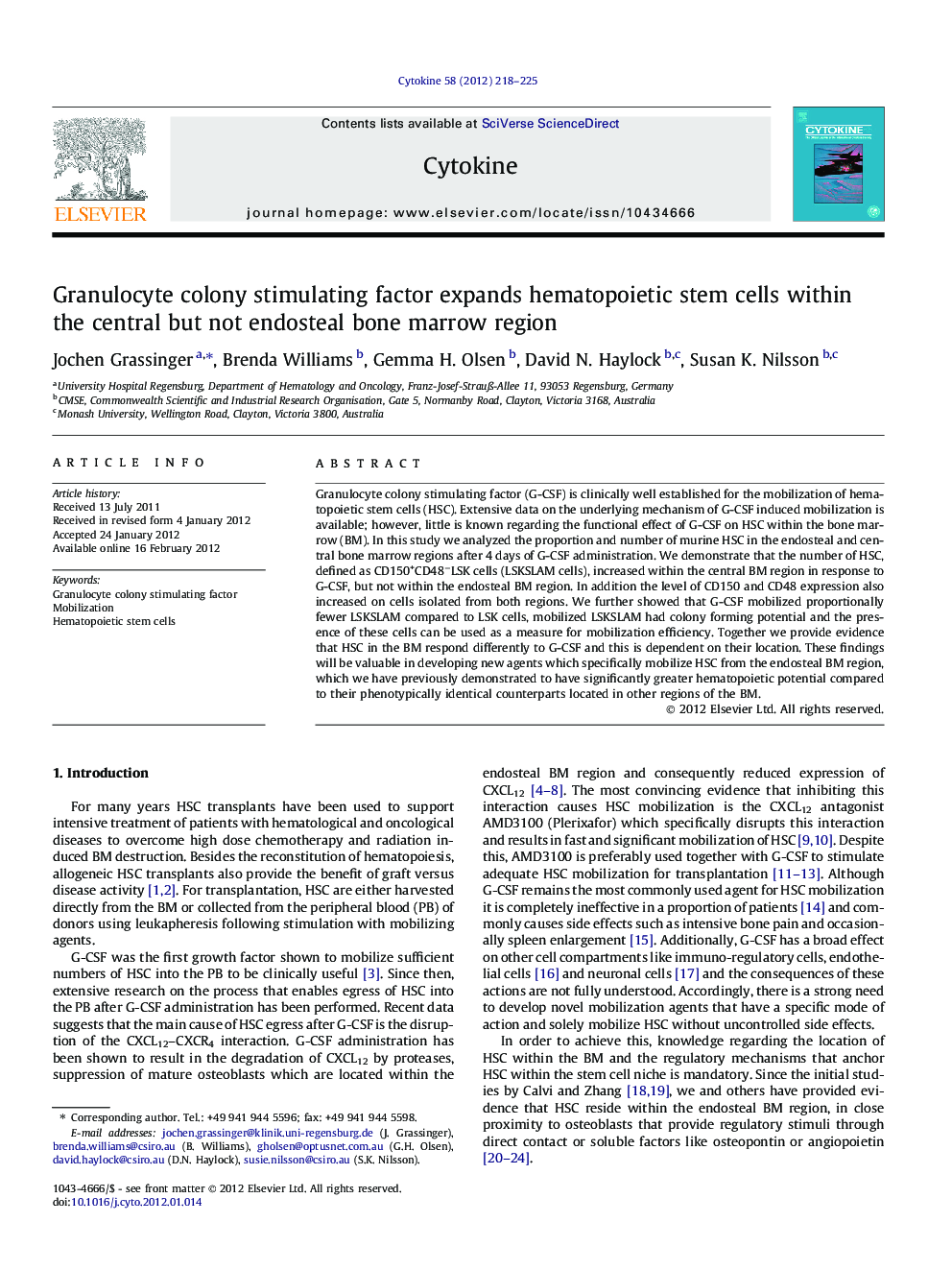| Article ID | Journal | Published Year | Pages | File Type |
|---|---|---|---|---|
| 5898108 | Cytokine | 2012 | 8 Pages |
Granulocyte colony stimulating factor (G-CSF) is clinically well established for the mobilization of hematopoietic stem cells (HSC). Extensive data on the underlying mechanism of G-CSF induced mobilization is available; however, little is known regarding the functional effect of G-CSF on HSC within the bone marrow (BM). In this study we analyzed the proportion and number of murine HSC in the endosteal and central bone marrow regions after 4Â days of G-CSF administration. We demonstrate that the number of HSC, defined as CD150+CD48âLSK cells (LSKSLAM cells), increased within the central BM region in response to G-CSF, but not within the endosteal BM region. In addition the level of CD150 and CD48 expression also increased on cells isolated from both regions. We further showed that G-CSF mobilized proportionally fewer LSKSLAM compared to LSK cells, mobilized LSKSLAM had colony forming potential and the presence of these cells can be used as a measure for mobilization efficiency. Together we provide evidence that HSC in the BM respond differently to G-CSF and this is dependent on their location. These findings will be valuable in developing new agents which specifically mobilize HSC from the endosteal BM region, which we have previously demonstrated to have significantly greater hematopoietic potential compared to their phenotypically identical counterparts located in other regions of the BM.
⺠G-CSF is frequently used to mobilize HSC for clinical purposes. ⺠We analyzed the functional effect of G-CSF on murine bone marrow cells. ⺠G-CSF expanded HSC within the central but not endosteal bone marrow region. ⺠Proportionally more progenitor cells than HSC were mobilized by G-CSF. ⺠Agents that mobilize more HSC are needed for clinical benefits.
